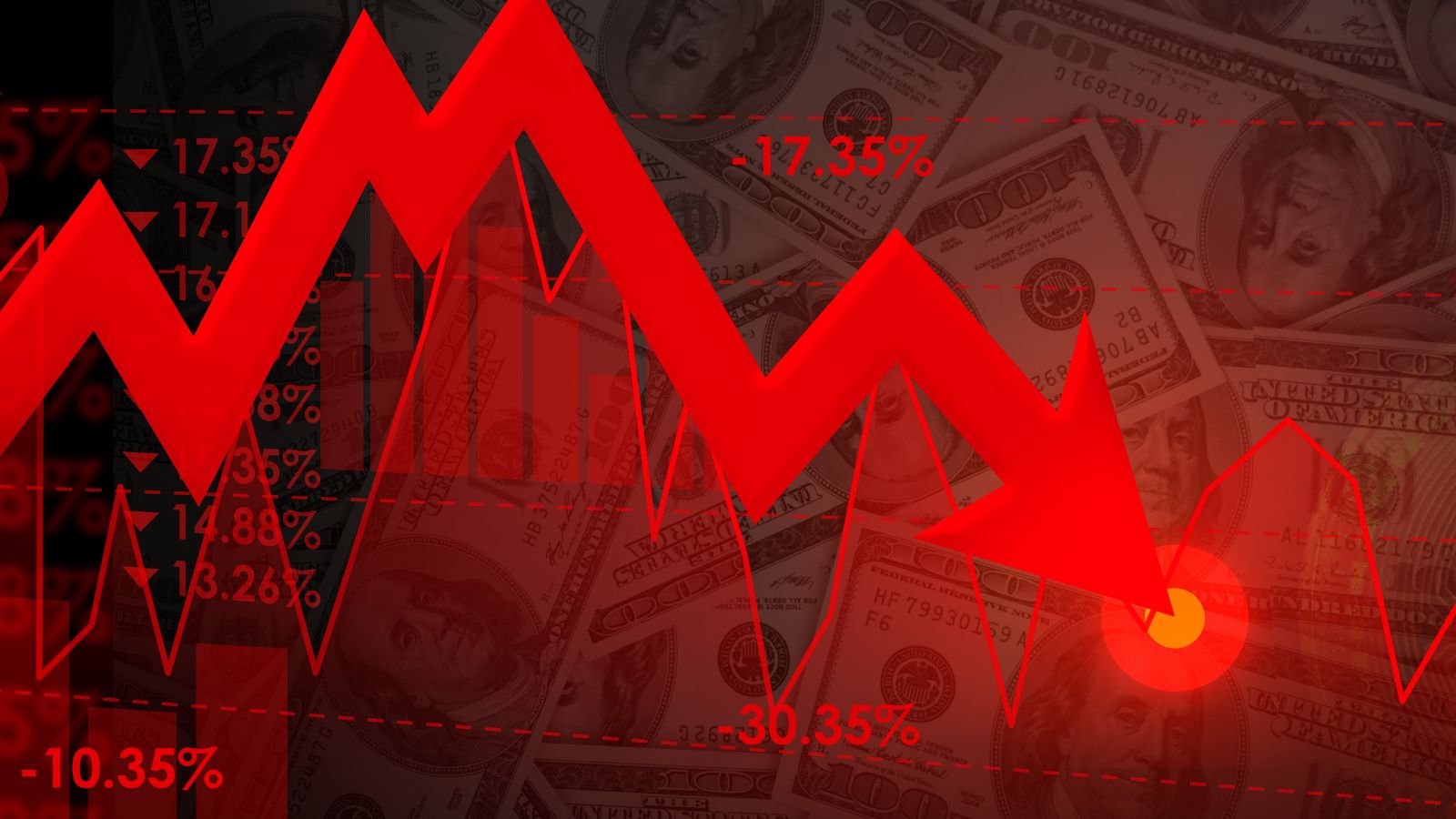Imagine waking up one morning to the news that the U.S. has suddenly slapped hefty tariffs on Canadian goods. For many Canadians, especially those with a stake in the housing market—whether you’re a prospective homeowner, a current buyer, or even a builder—the implications could feel personal and far-reaching. In this article, we’ll walk through 27 ways this kind of trade conflict could ripple through our housing market. We’ll explore everything from rising costs for your dream home to how your local community might change, all in language that’s easy to understand.
The Sticker Shock on Building Materials

First, consider your local builder. When tariffs hit, everyday materials like glass, appliances, and even everyday hardware get pricier. Think about it: if your builder is paying more for these materials, it is highly likely that they will pass those extra costs on to you in the form of higher home prices. It’s like going to your favorite coffee shop and suddenly finding out your latte costs a couple of dollars more because the beans now cost more to import.
New Homes Start Slowing Down

With uncertainty in the air, builders might hesitate to start new projects. You might notice fewer “For Sale” signs in neighborhoods where new homes are usually pop up. A slower construction pace means fewer homes are coming onto the market, which could intensify competition for the available ones.
Renovation Dreams Get Pricier

It’s not just about new homes. If you’ve been planning a renovation—maybe updating your kitchen or adding an extra room—you might soon face higher costs. Materials imported from the U.S. or other countries might now be more expensive, meaning your dream upgrade could come with a steeper price tag.
Supply Chains in a Tangle

Canada’s construction industry thrives on smooth supply chains. When tariffs hit, the dependable flow of materials from the U.S. might get interrupted. Builders could be forced to look for alternative suppliers, sometimes local ones that aren’t as cost-effective or abundant, leading to delays and higher overall costs.
The Fear of an Economic Downturn

Let’s be honest—a trade war creates an unsettling feeling about the future. There’s always the worry that economic growth could stall or even tip into recession. With job security and income in question, many Canadians might feel less confident about buying a home, slowing down the entire market.
More Expensive Homes for Buyers

As costs pile up for builders—from materials to labor—these expenses often get passed along to buyers. If you’re planning to buy a house, you might soon find that your budget doesn’t stretch as far as it used to, making the dream of homeownership a bit more challenging.
Investors Taking a Step Back

At times, when the market becomes unstable, investors tend to retreat. The residential real estate sector, which usually draws in both long-term buyers and speculators, could experience a reduction in speculative investments. This may lead to a more subdued market where prices don’t increase as dramatically. However, it could also hinder some price appreciation in specific regions.
A Wobbly Canadian Dollar

Economic uncertainty often plays havoc with currencies. In our case, the Canadian dollar might weaken if a trade war drags on. While a weaker currency can make our exports more competitive, it also means that imported goods—including crucial building materials—get even more expensive.
Government Steps In

When things get tough, governments often try to help. You might see the Canadian government taking measures to ease the strain on the housing market in response to a trade war. This could come in the form of tax relief—like lowering the GST on new homes—or other incentives to keep the market afloat despite rising costs.
New Ways of Building

Facing higher material costs and supply chain issues, builders may start looking for creative solutions. You might see more modular homes or innovative building methods that use locally sourced materials. While these new techniques may feel different from what you’re used to, they could lead to more sustainable and, eventually, more cost-effective construction practices.
The Resale Market Feels the Pressure

Even if your existing home isn’t directly affected by tariffs, the overall market mood can change. Sellers might delay putting their homes on the market out of fear of lower prices, which could reduce the number of available resale homes. This might keep home prices high even if new builds slow down.
Stricter Mortgage Rules

When the economic outlook is uncertain, banks get more cautious. Mortgage lenders may tighten their lending standards to protect themselves against potential losses. For you, that could mean more paperwork, higher interest rates, or even a tougher time qualifying for a loan.
Uneven Impact Across Regions

Not all parts of Canada will feel the trade war equally. Areas with more diversified supply chains could see a less severe impact. However, regions that rely heavily on U.S. imports might suffer more. This means your local housing market might evolve differently than other parts of the country.
Labor Costs on the Rise

It’s not just the materials that get more expensive—labor costs can rise, too. With disrupted supply chains and project delays, construction companies might have to pay more to keep their workers on board. These higher labor costs add another layer to the final price of a home.
Builders Squeezed on Profits
 Homebuilders operate on thin margins. If building costs go up but they can’t increase the selling price of homes proportionally, their profits will shrink. This squeeze might force some smaller builders out of business or lead to mergers, changing the competitive landscape of the housing market.
Homebuilders operate on thin margins. If building costs go up but they can’t increase the selling price of homes proportionally, their profits will shrink. This squeeze might force some smaller builders out of business or lead to mergers, changing the competitive landscape of the housing market.
A Tighter Housing Supply

When new builds and renovations slow down, the overall housing supply takes a hit. With fewer homes available, especially in high-demand urban areas, prices could climb even higher—making it even harder for newcomers or first-time buyers to enter the market.
Pressure Mounts on the Rental Market

If buying a home becomes more challenging due to rising prices, more people might be forced to rent instead. This increased demand can drive up rental prices and make the rental market more competitive, affecting everyone from students to young families.
Development Projects on Hold

For many developers, uncertainty is a major red flag. A volatile economic environment might lead them to delay or cancel large-scale housing projects. This hesitation not only limits future supply but also creates a sense of stagnation in the market.
Uncertain Foreign Investment

Foreign buyers have long been an important part of Canada’s housing scene, especially in Toronto and Vancouver. However, if a trade war shakes investor confidence, these international buyers might pull back. A decrease in foreign investment could slow price growth in key markets, altering the usual dynamics of demand.
Ripple Effects Across the Economy

A trade war doesn’t exist in a vacuum—it affects the broader economy too. Job losses, reduced consumer spending, and a general slowdown can all trickle down to the housing market. When people have less money to spend, fewer are in a position to buy a home, which can dampen market activity.
Municipal Challenges

New housing developments contribute to local budgets through property taxes and development fees. If construction slows down, municipalities might see a decline in revenue. This drop can affect public services and local infrastructure projects, potentially making some neighborhoods less attractive to homebuyers.
Urban Versus Rural Divide

In some cities, especially those with high construction costs and heavy reliance on imported materials, the impact might be more pronounced. Meanwhile, rural areas or smaller towns with more local resources might feel the pinch less. Over time, this could shift where people want to live, with some buyers moving away from urban centers in search of more affordable options.
Shifting Migration Patterns

Economic uncertainty and rising housing costs can spark internal migration. People might leave cities that become too expensive or unstable for more affordable regions. These shifts can change the character of local markets, with some areas experiencing rapid growth while others see a decline.
A Push for Trade Diversification

A persistent trade war may force Canada to look beyond the U.S. for its trade partners. Diversifying trade relationships could help stabilize some sectors of the economy, including construction. Over time, this shift might lead to a more balanced economic structure that could benefit the housing market through improved local production and innovation.
Energy Prices and Home Operating Costs

Although energy resources might face lower tariffs, any significant changes in energy prices can affect everyday living expenses. Higher utility bills or increased costs for heating and electricity may influence homebuyers’ decisions as ongoing operating costs become an even more important affordability factor.
Rethinking Policies and Regulations

At times, a crisis compels governments to reconsider their current policies. In reaction to a trade conflict, policymakers may implement new regulations or incentives to stabilize the housing sector. These initiatives could include updated building standards or financial regulations aimed at enhancing mortgage accessibility, which could result in lasting transformations in the functioning of the market.
Turning to Homegrown Suppliers

Lastly, one potential silver lining is the shift toward domestic sourcing. Homebuilders might increasingly rely on Canadian suppliers to avoid the extra costs of tariffs on imported materials. While the transition may come with challenges—local alternatives might be more expensive or less efficient—this move could boost local industries and lead to innovative new ways of building homes.
Conclusion

For many, watching a familiar market change so dramatically is unsettling. But amid these challenges lie opportunities for change and innovation. Homebuilders might embrace new construction methods that are more sustainable, and local suppliers could see a boost in demand. Governments may step in with policies designed to cushion the blow, and communities might find creative ways to adapt to the new economic landscape.
Think of it this way: while the immediate reaction to a trade war might be panic or uncertainty, over time, the market tends to adjust. History shows that industries adapt to shocks—sometimes in unexpected and beneficial ways. For example, a shift toward domestic sourcing might reduce Canada’s dependency on foreign suppliers, leading to a more resilient local economy. Likewise, innovations in building techniques can create new opportunities for efficiency and cost savings, benefiting both builders and buyers in the long run.
It’s also important to remember that the housing market doesn’t operate in isolation. Factors such as shifts in investor sentiment, internal migration, and changing lending standards all shape the overall picture. Even as a trade war creates pockets of uncertainty, these broader forces might help stabilize certain aspects of the market, even if the short-term picture appears grim.
25 Countries Predicted to Become Economic Superpowers in the Next 20 Years

The strength of an economy plays a crucial role in various international policies about trade and relations. Certain factors determine the strength of an economy, including population growth, availability of resources, and development and advancement. Here are 25 countries predicted to become economic superpowers in the next 20 years
25 Countries Predicted to Become Economic Superpowers in the Next 20 Years
